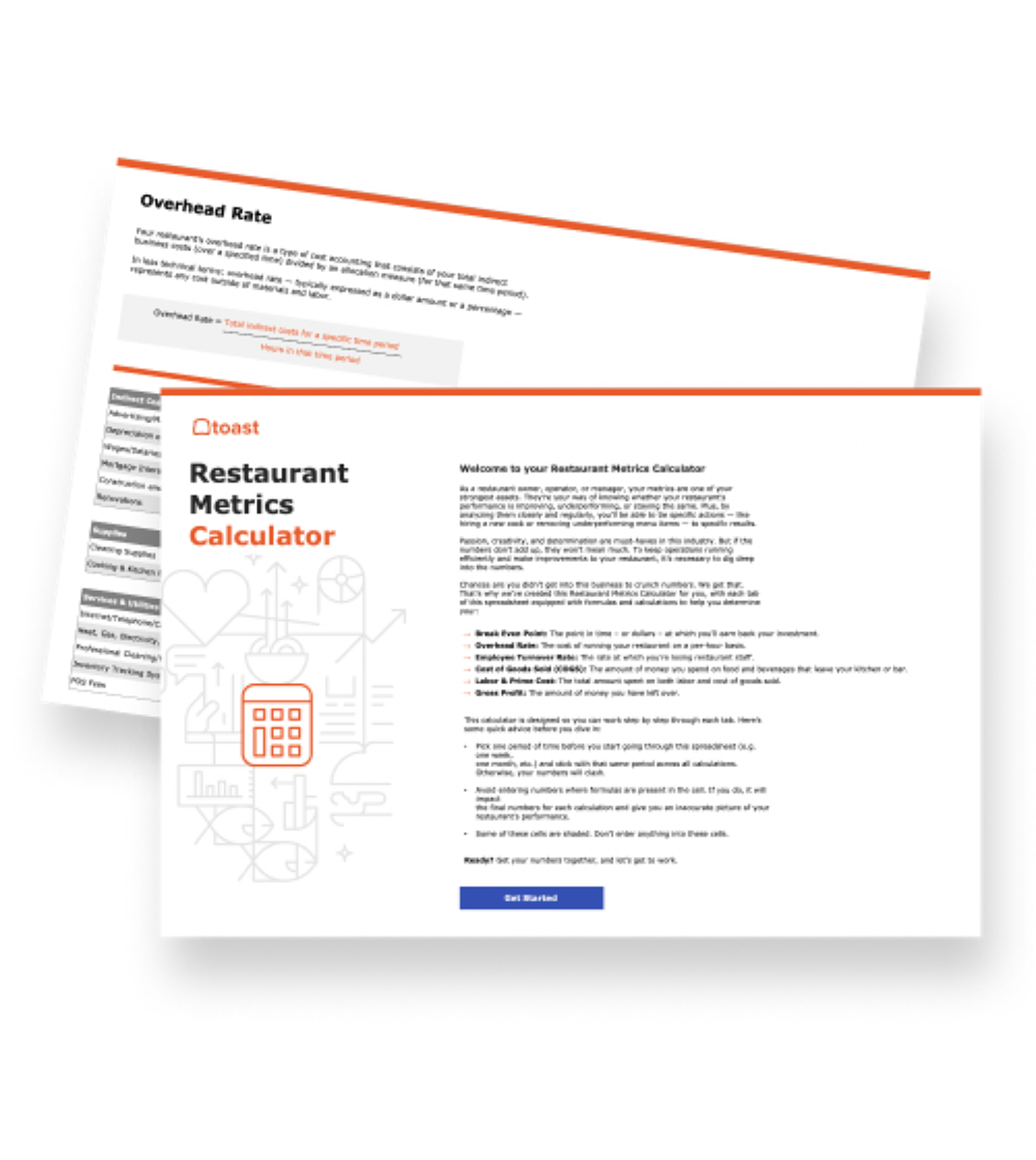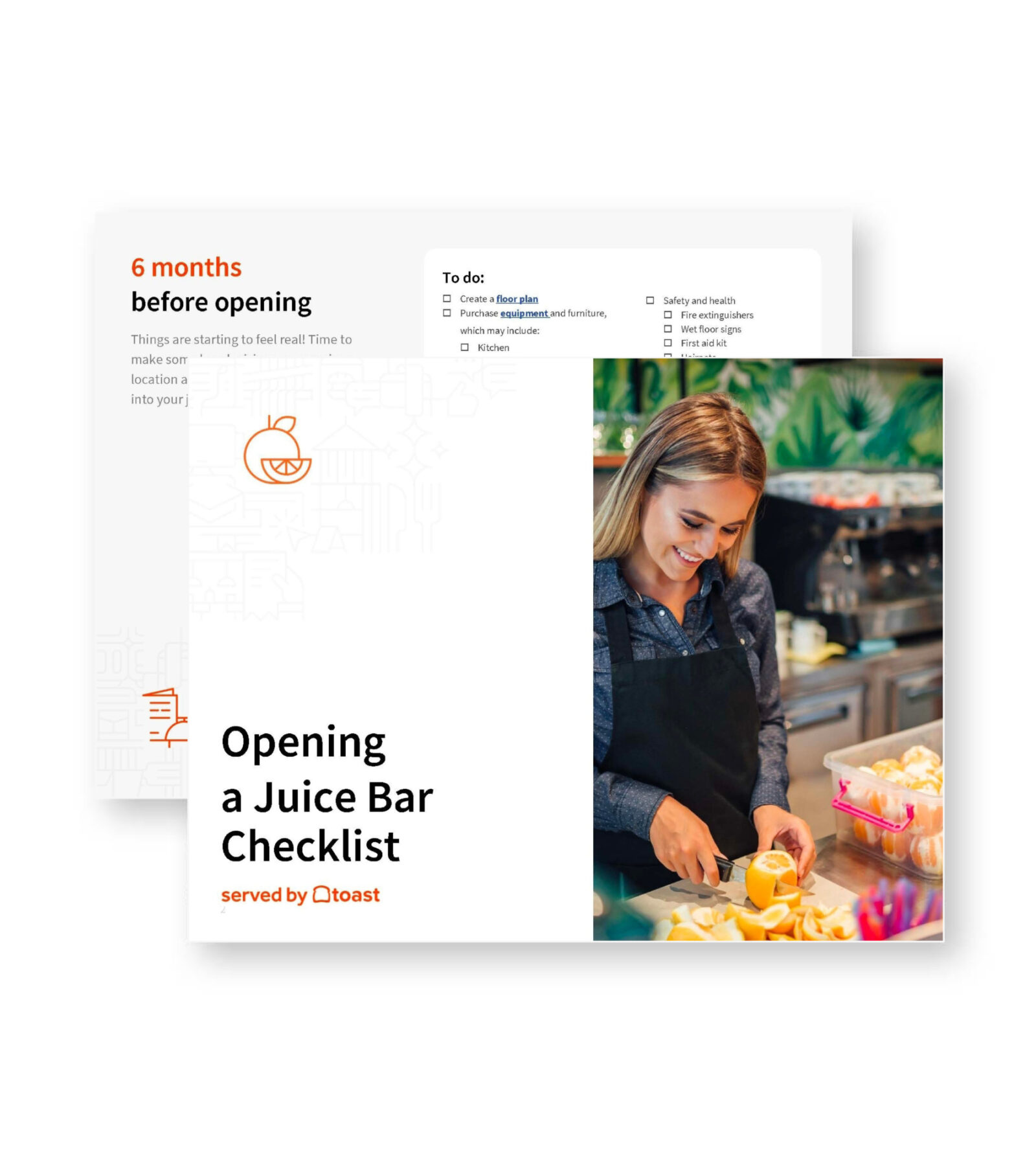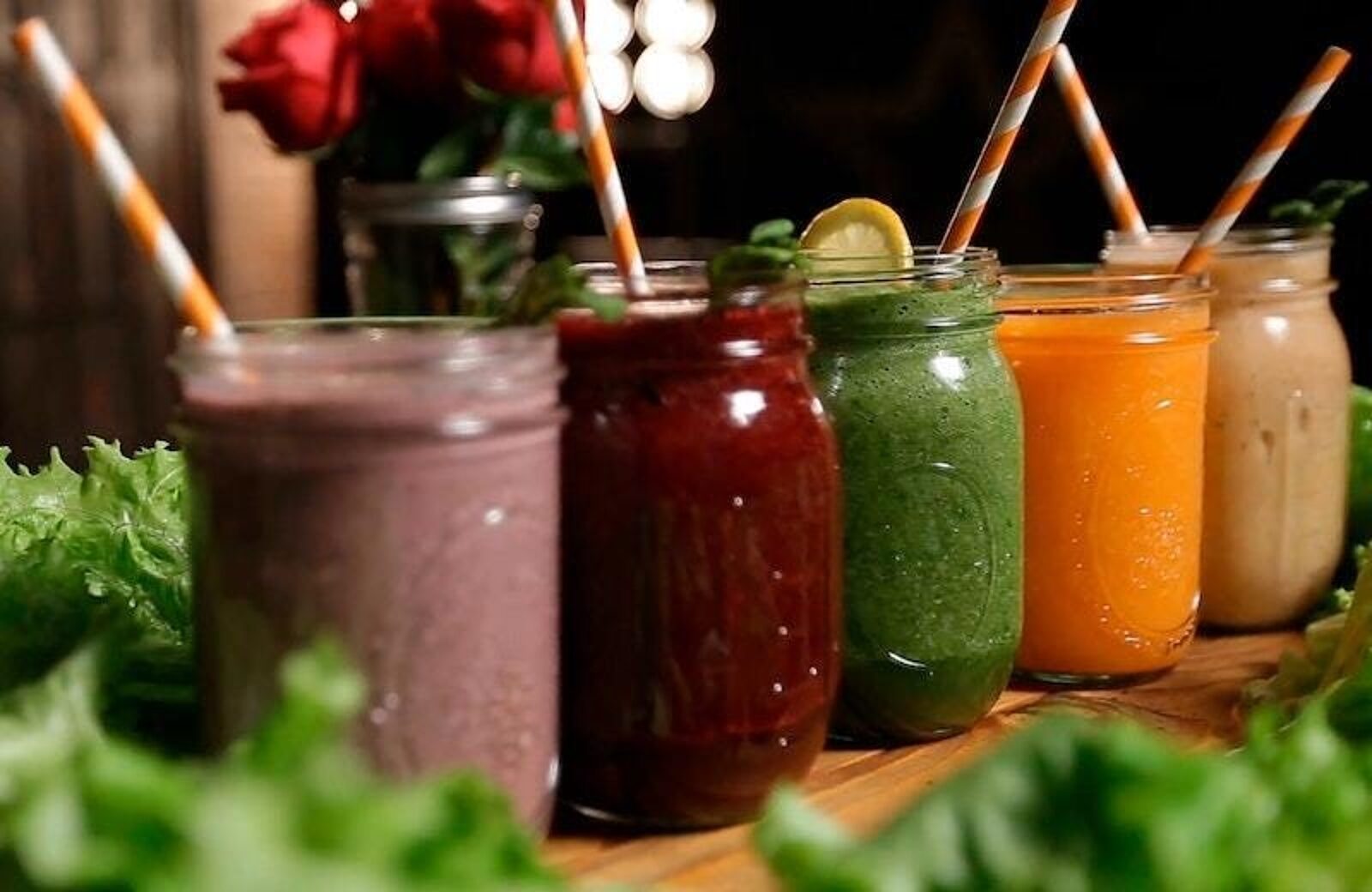
How Much Do Juice Bars Make?
Press your way to success – and calculate your juice bar’s revenue potential with this guide.
Tyler MartinezAuthor


Restaurant Metrics Calculator
Use this free calculator to calculate the key restaurant metrics needed to understand the health and success of your business.
Get free downloadHow Much Do Juice Bars Make? (Juice Bar Profit Margin)
Juice bars are flexible business models that can churn out major cash – the average annual revenue of a juice bar ranges from $100,000 - $600,000. Additionally, juice bars often run with lower labor and operating expenses, raising the profit margin.
Read on to learn more about the potential profitability of your juice bar and how much owners can expect to make.
Restaurant Profit Margin Calculator
Use this free Restaurant Profit Margin Calculator to see how efficiently you turn sales dollars into profits.

Costs to start a juice bar
Juice bars require specialized equipment. But luckily, commercial blenders and cold press machines are relatively inexpensive. As part of your juice bar’s financial plans, consider all of the startup costs and remember to budget for your unique business plan:
- Startup - $275,000 - $425,000
- Equipment - $60,000 - $200,000
- Permits/licenses - $500 - $1,500
- Marketing - $300 - $3,000
- Contingency funds - $50,000 - $100,000
Are Juice Bars Profitable? (Average Juice Bar Profit Margin)
The first year of business is critical – and costly. Startup costs, hiring the right team, renting a commercial storefront, planning for operating costs, and lining up all the permits and licenses takes time and careful accounting.
Contingency funds help your juice bar run smoothly for the first few years until it becomes profitable. Liquid assets from a combination of financial avenues such as loans, savings, and lines of credit help pay for unforeseen expenses and labor. Even the best businesses aren’t immune to Murphy’s law.
Average juice bar costs
The monthly expenses of operating your juice bar will likely total 75-85 percent of your monthly sales. For your first few years, you might have to invest in the shop to make up for losses in food costs or marketing. Luckily, in a juice bar, labor costs are usually lower than in other restaurants.
- Operating costs - $13,000 - $55,000
- Insurance - $500-$8,000/month
- Rent - $1,500-$10,000/month
- Utilities - $1,000-$1,500/month
- Marketing - $500- $5,000 (3-6% of sales)
- Food costs - $5,000-$15,000 (30-35% of sales)
- Labor - $2,500-$10,000 (24-40% of sales)
Forecasting your juice bar’s sales
Typically, restaurants use sales data, labor costs, food costs, and production capacity to forecast their sales. Without sales history, it is difficult to make calculations about how your restaurant will grow each month in your first year. Consider factors like seasonal peaks in your area, your marketing strategy, and other Key Performance Indicators (KPIs) when forecasting sales.
To start on the right foot, begin calculating your daily capacity. Then, based on the food costs and profits of your menu, you can calculate how much you have the potential to make during a shift.
Of course, you won’t be working at capacity every shift – perhaps not even most of them in your first year. If you have sales data from a month (or even a week) you can view the average sales from each of those days and calculate the average for each shift. A proper Point of Sale (POS) technology will streamline this process by providing you with an organized dashboard of the daily capacity data you need.
Average juice bar revenue
The average revenue of juice bars is competitive and the profit margins can be higher than in other restaurant models. Nationally, juice bars make $100,000-$600,000 in revenue, depending on location and the size of the business. Many juice bars franchise their business model to other investors to expand their markets.
Juice bar profit margin per month
A restaurant’s profit margin is typically between 3 percent and 5 percent, but some make as little as 0 percent while others as much as 15 percent. To calculate your juice bar’s profit margin, use the following equation:
monthly sales x profit margin = profit
If your juice bar averages $40,000/month in sales, and the profit margin is 4 percent, the profit is $1,600.
Juice bar owner's salary
Once your juice bar becomes profitable, then you as the owner can think about taking a salary!
In a small operation, your salary might be a high percentage of the business's profits relative to how much labor you expend. If you’re the research and development team, manager and administrator, you can afford to pay yourself a higher percentage of the profits.
Usually, a business owner’s salary is less than 50 percent of the profits. As the owner, you’ll have to make tough decisions about how much to pay yourself while investing profits into the growth of the business and wages for your staff. The first year can be especially daunting, but improving your sales with marketing and technology will put your juice bar on the road to success.
Timeline to breaking even
As with most restaurants, juice bars can expect to become profitable within the first three years depending on food costs, labor, and business’s KPIs.
To ensure that your juice bar becomes profitable before you spend through your contingency funds, you’ll want to carefully forecast your revenue. That way, you can project how long it will take your business to see its first profitable month against startup and operating costs.
Here’s a detailed example of a timeline for breaking even:
Jus Juice in Indianapolis, IN starts with savings of $150,000 and additional financing from loans and lines of credit for $175,000, with a repayment period of 6 years:
Category | Cost |
Juice bar equipment | $100,000 |
Permits and licenses | $1,200 |
Contingency funds | $175,000 |
Jus Juice is also able to take control of their food costs and find additional margin there.
Category | Cost/month |
Brewery/restaurant rental | $9,000 |
Insurance | $3,500 |
Utilities | $1,400 |
Food costs | $12,000 |
Labor | $8,000 |
Marketing | $800 |
Loan payment | $2,600 |
Total: | $37,300 |
The annual cost to operate Jus Juice is $447,600.
Jus Juice is staffed and stocked to serve 350 customers a day. They expect 100 percent of customers to buy a fresh juice or smoothie and their average profit on juices is $4.50. About 45 percent of customers will also purchase a salad or sandwich, which adds $5.75 to the profit of those orders. If Jus Juice operates at capacity 7 days a week, the store’s revenue is $527,520 annually, or $43,960 monthly.
Category | Earnings |
Monthly sales | $43,960 |
Operating expenses | $37,400 |
Profit | $6,660 |
Profit margin at 100% capacity: | 1.5% |
Jus Juice doesn’t expect to operate at 100 percent capacity and is profitable at 84 percent capacity. They expect to be busier in the Spring and Summer months, while Q1 and Q4 will see less traffic. The store’s marketing practices garner them a lot of attention so their sales steadily increase from the time they open. The bakery becomes profitable by the end of year three.
Quarter | Performance (average) | Revenue |
Q1 | 45% | $19,782 |
Q2 | 50% | $21,983 |
Q3 | 65% | $28,574 |
Q4 | 69% | $30,332 |
Q5 | 64% | $28,134 |
Q6 | 67% | $29,453 |
Q7 | 73% | $32,090 |
Q8 | 71% | $31,211 |
Q9 | 80% | $35,168 |
Q10 | 86% | $37,805 |
Q11 | 90% | $39,564 |
Q12 | 81% | $35,607 |
The right tech
Technology can empower your juice bar with all the tools it needs to maximize efficiency and profitability. Set your business up for success by utilizing inventory, time-tracking, and financial software from the start. When you’re ready to scale up, the right technology keeps the business organized and your growth on track.
Press your way to success
Take your time with the numbers – financial plans are a crucial step in your juice bar’s long term success.
It’s never too late to open the juice bar of your dreams, and now is the perfect time to start. On the Line’s latest how to start a juice bar guide has all the tips you’ll need on the journey to making the tastiest juice in town.
Related Juice Bar Resources
Is this article helpful?
DISCLAIMER: This information is provided for general informational purposes only, and publication does not constitute an endorsement. Toast does not warrant the accuracy or completeness of any information, text, graphics, links, or other items contained within this content. Toast does not guarantee you will achieve any specific results if you follow any advice herein. It may be advisable for you to consult with a professional such as a lawyer, accountant, or business advisor for advice specific to your situation.
Read More
Subscribe to On the Line
Sign up to get industry intel, advice, tools, and honest takes from real people tackling their restaurants’ greatest challenges.



